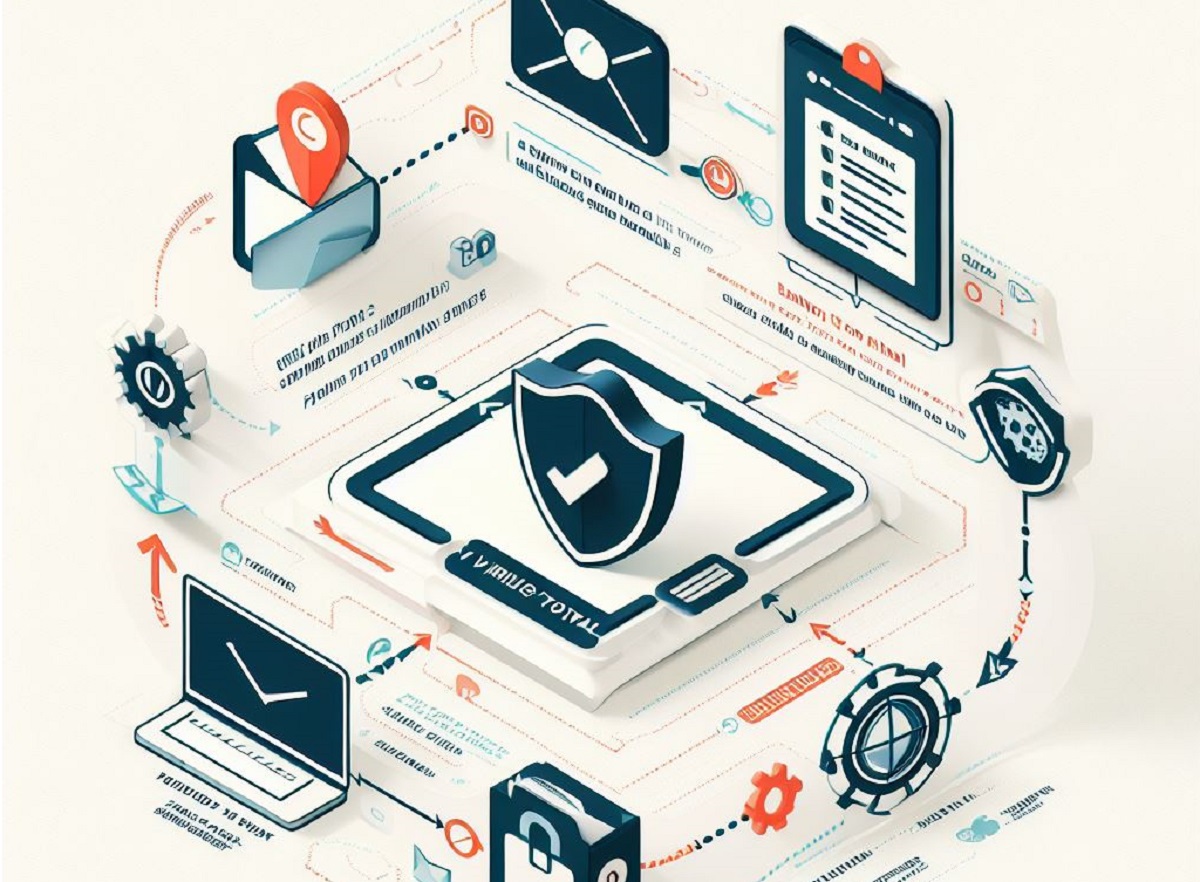Virustotal is a well-known online service that plays a significant role in cybersecurity. It offers a cloud-based platform for users to assess the safety and security of digital files and URLs. By utilizing a multitude of antivirus engines, Virustotal scans and analyzes these digital resources, providing a comprehensive assessment of potential security threats. This extensive explanation will delve into the intricacies of how Virustotal operates without using the term “Understanding.”
How Virustotal Works
Virustotal’s operation can be broken down into several key steps, each contributing to its comprehensive analysis of files and URLs:
File or URL Submission
The first step in the process involves users submitting a file or URL for analysis. Virustotal’s user-friendly web interface allows individuals to upload files or enter URLs directly. The simplicity of this step makes Virustotal accessible to novice and experienced users.
File Analysis
If a user submits a file, Virustotal conducts a thorough analysis. The platform accepts various files, including documents, executables, and compressed archives. This analysis focuses on examining the file’s contents, looking for potential malware, viruses, or other security threats.
URL Analysis
Virustotal inspects the webpage associated with the submitted URL in the case of URL analysis. This process is designed to identify any malicious content or security risks that may be present on the website. It helps users assess the safety of web links before visiting them.
Antivirus Engine Scanning
Once a file or URL is submitted, Virustotal engages a multitude of antivirus engines to perform the actual scanning and analysis. These antivirus engines are third-party products from various cybersecurity companies. The number of engines used can vary, but it typically exceeds 70, contributing to the service’s comprehensiveness.
Multiple Detection Techniques
These antivirus engines employ various detection techniques to identify potential security threats within the submitted content. These techniques include:
Signature-Based Detection: This technique involves comparing the file or URL with known patterns or signatures of known malware. If there’s a match, the engine flags it as a potential threat.
Heuristics: Heuristic analysis looks for behavioral patterns or characteristics typical of malware. This method doesn’t rely on specific signatures but on identifying potentially suspicious behavior.
Behavioral Analysis: Some engines use behavioral analysis to assess how the file or URL behaves when executed. Deviations from typical or safe behaviors can trigger a warning.
Aggregated Results
After scanning, Virustotal aggregates the results from all the antivirus engines. This aggregation allows users to see how many engines detected potential threats and how many did not. It provides a summarized view of the potential risk associated with the submitted content.
Individual Engine Results
Alongside the aggregated results, Virustotal provides users with detailed information about the individual antivirus engines’ scan outcomes. Users can see which engines flagged the content as potentially harmful and which did not. This granular information can be invaluable for users with specific preferences or requirements.
Comments and Community Engagement
Virustotal’s interface encourages community involvement through comments and discussions on analysis reports. Users can provide their insights and share their experiences, further enhancing the depth of understanding regarding the security of a particular file or URL. This communal aspect of the service adds a layer of real-world context to the results.
Historical Data
Virustotal retains historical data for each file or URL that is analyzed. Users can access this historical data to track changes in a file’s reputation or link over time. This feature is especially useful for understanding the evolution of potential threats and assessing reliability.
Advanced Features
Virustotal offers advanced features for users with registered accounts, including the ability to configure custom policies for scans, schedule scans at specific times, and access an API for integration into other systems. These features cater to more advanced and organizational use cases.
Advanced Features and Integration
Virustotal offers advanced features and integration options that enhance its functionality and cater to the needs of more advanced users and organizations:
API Integration
Virustotal provides an Application Programming Interface (API) for organizations and advanced users. This API allows users to integrate Virustotal’s functionality into their systems or applications. It’s particularly useful for automating file and URL scanning, streamlining the security assessment process.
Custom Policies
Registered users can create custom policies for scanning files and URLs. These policies enable users to tailor the scanning parameters to their needs and risk tolerance. Custom policies can be particularly beneficial for organizations with specific security requirements.
Scheduled Scans
Virustotal allows users with registered accounts to schedule periodic scans of files and URLs. This feature is precious for ongoing monitoring of digital resources that may change over time.
Enterprise Solutions
Virustotal offers enterprise solutions that cater to organizations with more extensive needs. These solutions provide additional features, scalability, and support, making them suitable for larger entities that require comprehensive security assessments.
Best Practices for Using Virustotal
To use Virustotal effectively and make informed decisions based on its assessments, consider the following best practices:
Cross-Verification
Do not solely rely on Virustotal’s results. Use multiple security tools and methods to cross-verify the findings. Different antivirus engines and tools may produce varying results, and a holistic approach to security is essential.
Regular Scanning
Periodically scan files and URLs, especially when associated with critical or sensitive activities. Cyber threats constantly evolve, and what was once safe may become a potential risk.
Stay Informed
Keep up to date with the latest cybersecurity trends and threats. Staying informed about emerging risks will help you interpret Virustotal results more effectively.
Submit Suspicious Files
If you encounter a file or URL you suspect is malicious, submit it to Virustotal for analysis. Your contribution can help the community identify new threats and improve security for others.
Educate Yourself
Develop a basic understanding of how antivirus engines work and what different types of detections mean. Familiarity with these concepts will empower you to interpret scan results more accurately and make informed decisions.
Use Comment and Discussion Features
Take advantage of the community engagement aspect of Virustotal. Reading and participating in discussions can provide valuable insights into the security of a file or URL and help you make informed decisions.
Conclusion
Virustotal is a valuable tool in the realm of cybersecurity, offering a user-friendly interface for assessing the potential security risks associated with digital files and URLs. Its operation involves multiple antivirus engines, each employing various detection techniques to identify potential threats. The platform’s aggregated results, user engagement features, historical data retention, and advanced options such as API integration make it a practical choice for many users, from individuals to organizations.
While Virustotal offers many strengths, its limitations include varying detection rates, a lack of context in results, limited URL analysis capabilities, and the absence of remediation features. Users should be aware of these factors and use Virustotal with other security measures to ensure a comprehensive approach to cybersecurity.
In the end, Virustotal is a valuable addition to a cybersecurity arsenal but should not be the sole determinant of the safety of digital content. Users must exercise caution, employ best practices in cybersecurity, and consider the service’s strengths and limitations to make informed decisions about the security of files and URLs.

